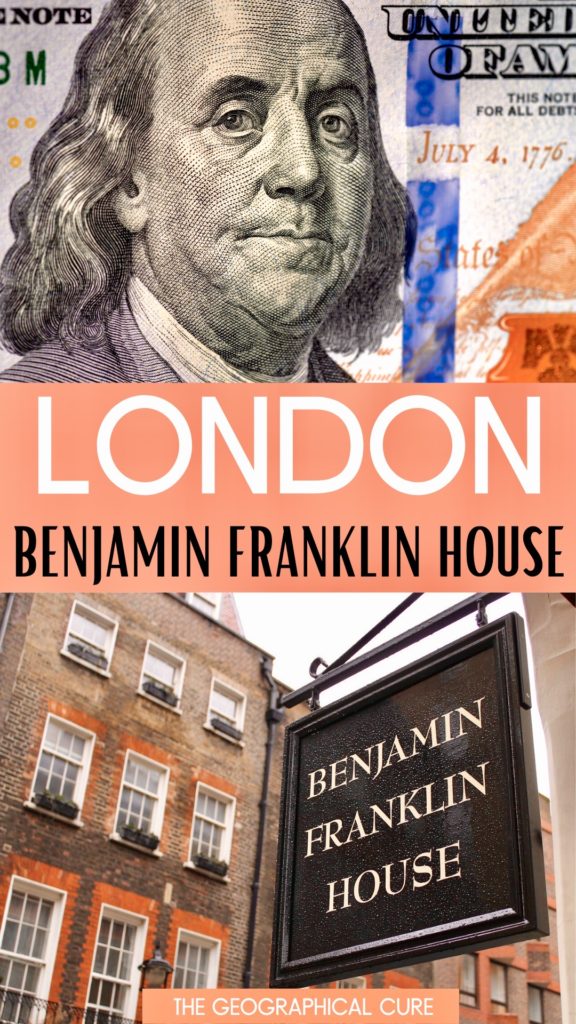The Benjamin Franklin House opened to the public for the first time in 2006, to celebrate Franklin’s 300th birthday. The house museum is a precious heritage asset in London.
History buffs and lovers of Georgian era architecture should definitely put the museum on their London bucket list. The Benjamin Franklin House is the only surviving residence in the world where Franklin lived and worked. His homes in Boston and Philadelphia are long gone.
Franklin lived there from 1757-72. He returned to America at the outbreak of the Revolutionary War.
The house has been beautifully conserved and brought back to its original 18th century appearance.
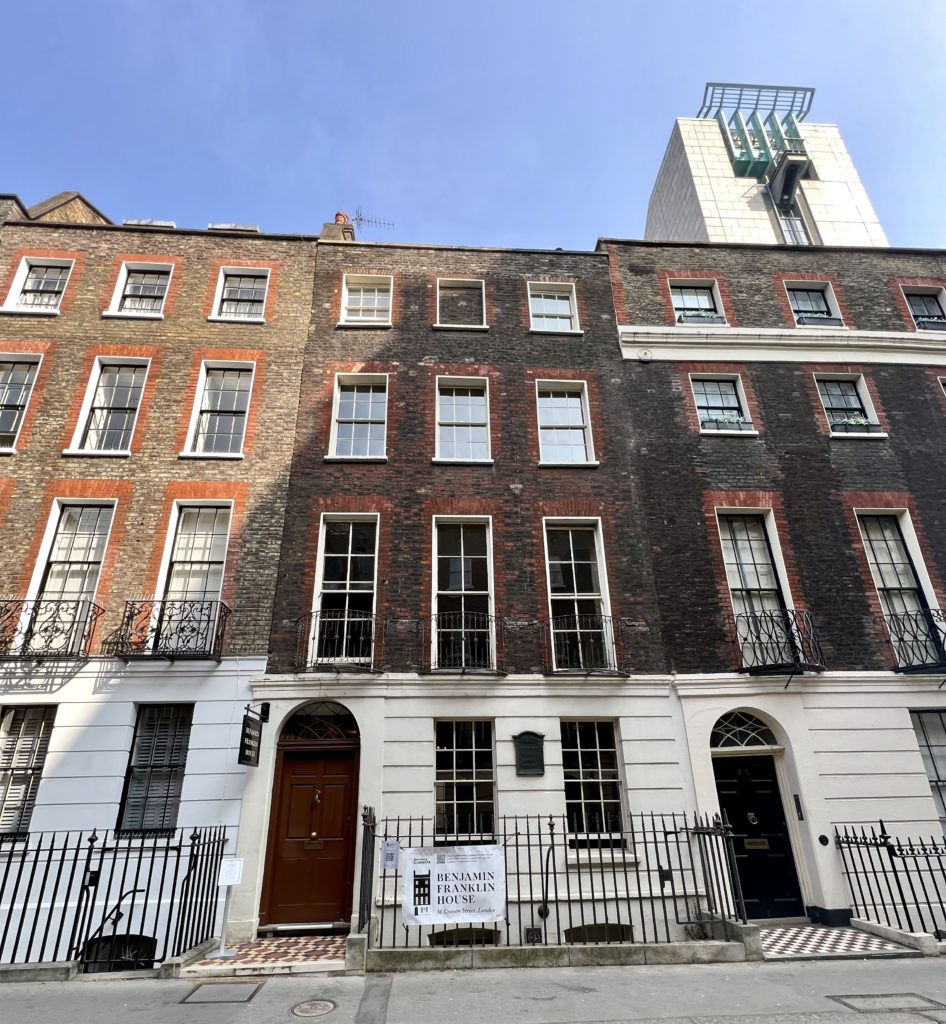
Who Was Benjamin Franklin?
Benjamin Franklin was born in Boston Massachusetts in 1706.
He’s a fascinating figure in American history who led a life full of curiosity and inquiry. Franklin was an inventor, writer, printer maker, philosopher, and diplomat.
He helped advance the Age of Enlightenment, a time when the development of the sciences transformed society.
Franklin arrived in London in 1757 at age 51. During his London years, Franklin served as a Colonial agent, mediating unrest between American and Britain.
Though he had strong convictions, a shrewd Franklin kept his opinions to himself.
He was an idealist of a practical sort with a soft spot for the British Empire and a reluctant revolutionary (at first).
Franklin was also a bon vivant and magnetic extrovert.
He had an active social life, forging relationship with leading British figures of the day. Franklin once said “I love Company, Chat, a Laugh, a Glass, and even a Song.”
After decades in London, Franklin returned to the United States. He left his British affection behind and became a fervent patriot and populist, rallying against British tyranny.
Franklin would go on to persuade France to become an ally and was a key founder of the United States. He’s often referred to as “the first American.”
Franklin is the only American statesman to have signed all four documents that created the fledgling nation: The Declaration of Independence (1776), the Treaty of Alliance with France (1778), the Treaty of Paris (1783), and the U.S. Constitution (1787).
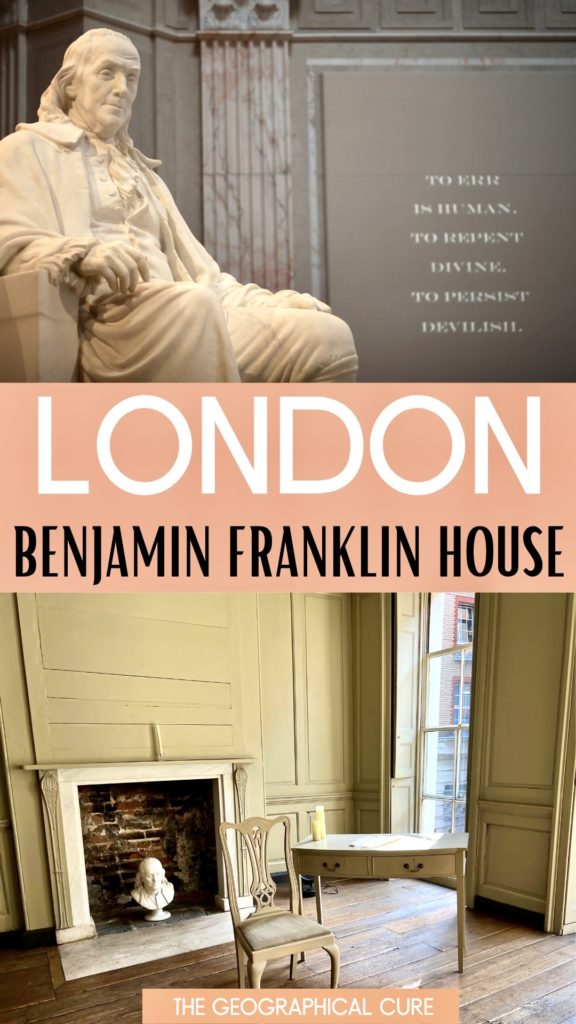
History of the Benjamin Franklin House
The land on which the Benjamin Franklin house sits was originally owned by William Baron Craven. It was on a rather seedy street that was originally known as Spur Alley.
Upon Craven’s death, in 1697, the property passed to William, the 5th Earl of Craven. He decided the area, near the Strand, was rife for development. Between 1730-1735, he built 20 houses on the west side of Craven Street and 15 on the east side.
In 1748, the Ben Franklin house at #36 was acquired by the widow Margaret Stevenson. She and her daughter Polly lived there.
Polly eventually married William Hewson. He opened an anatomy school at the house in 1772, which he mostly ran in secret because anatomy was a dodgy business in those days.
In 1757, Franklin moved in with the Stevensons. He became their lodger and was effectively part of the family.
Franklin rented a bedchamber and sitting room on the second story. He also entertained visitors in Mrs. Stevenson’s parlor on the first floor.
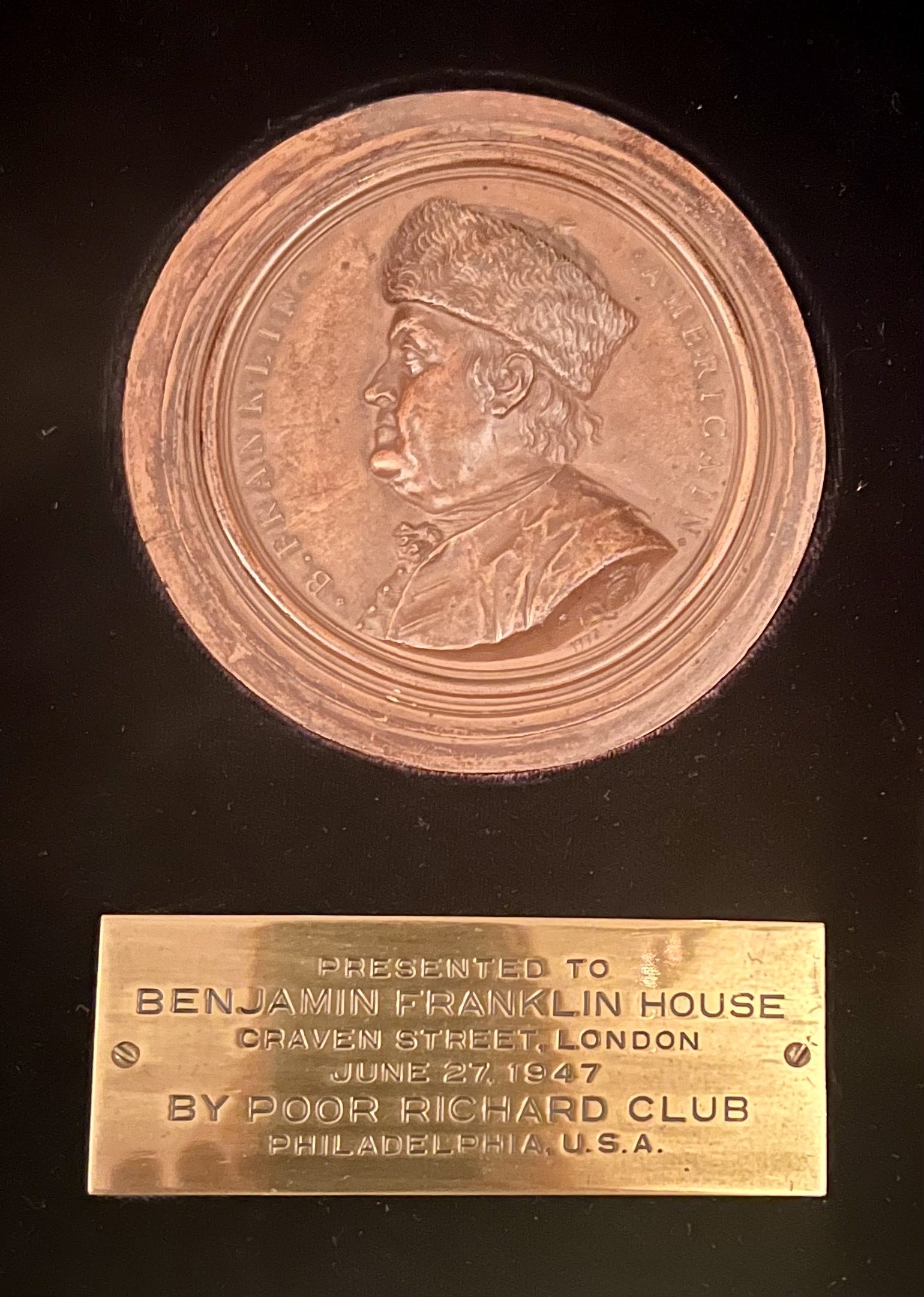
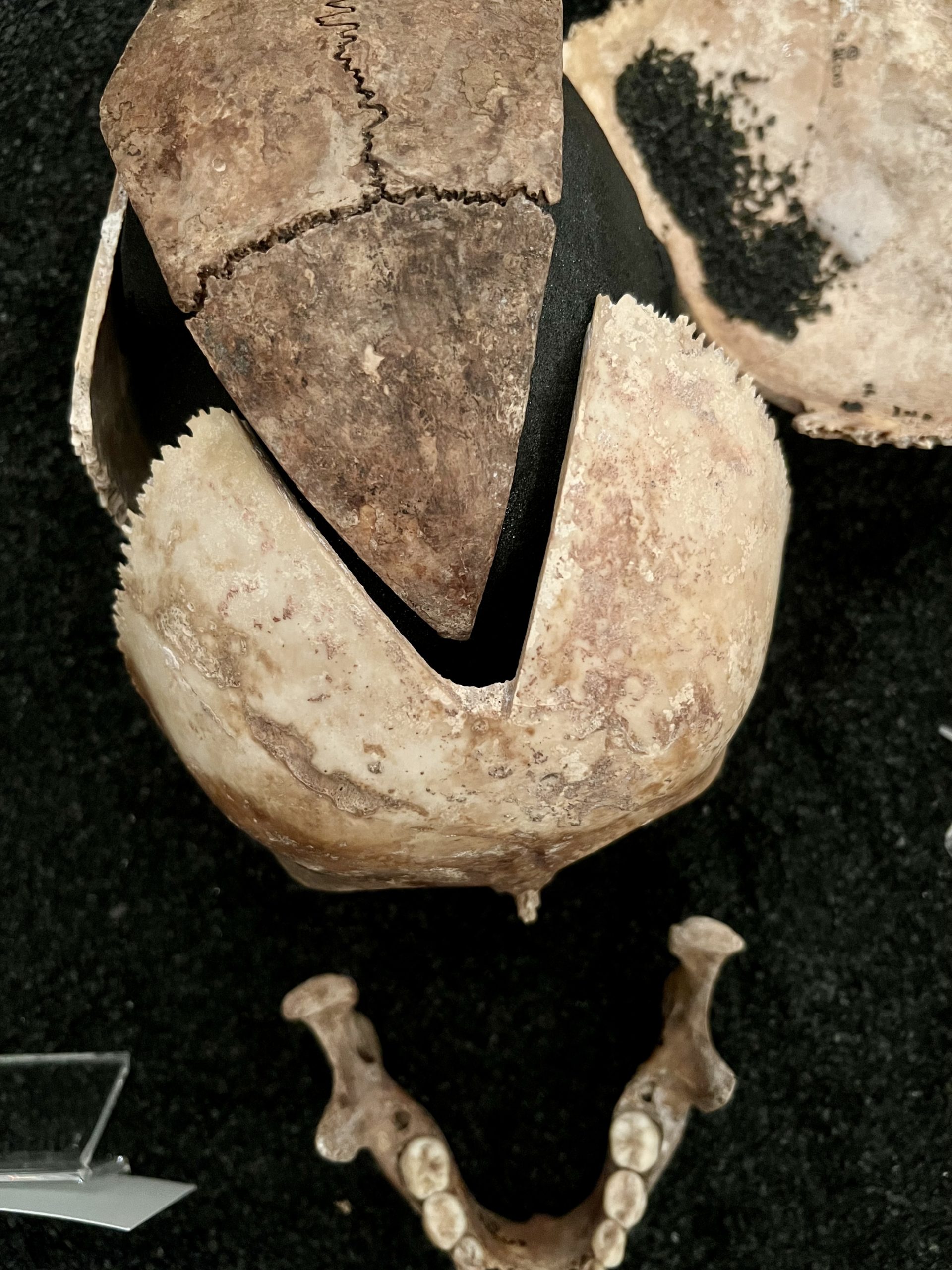
Later, many of the houses on Craven Street became hotels. The buildings survived WWII. But by the 20th century, they were abandoned and and derelict.
In 1998, The Friends of the Benjamin Franklin House acquired the house and raised money for its renovation.
As conservation got underway, restorers found bones, both human and animal, under the floor of one room. 1200 pieces of bone were retrieved.
The police were called. But investigators concluded that the bones were the remnants of the anatomy school run from the house. They’re now being catalogued by the University of London.
The Benjamin Franklin House is a Grade I listed building, which means it’s given the highest level of protection and conservation. It retains many of its original features, including the staircase, floorboards, wall panelling, and fireplaces.
But it’s empty, with the original period furnishings long gone.
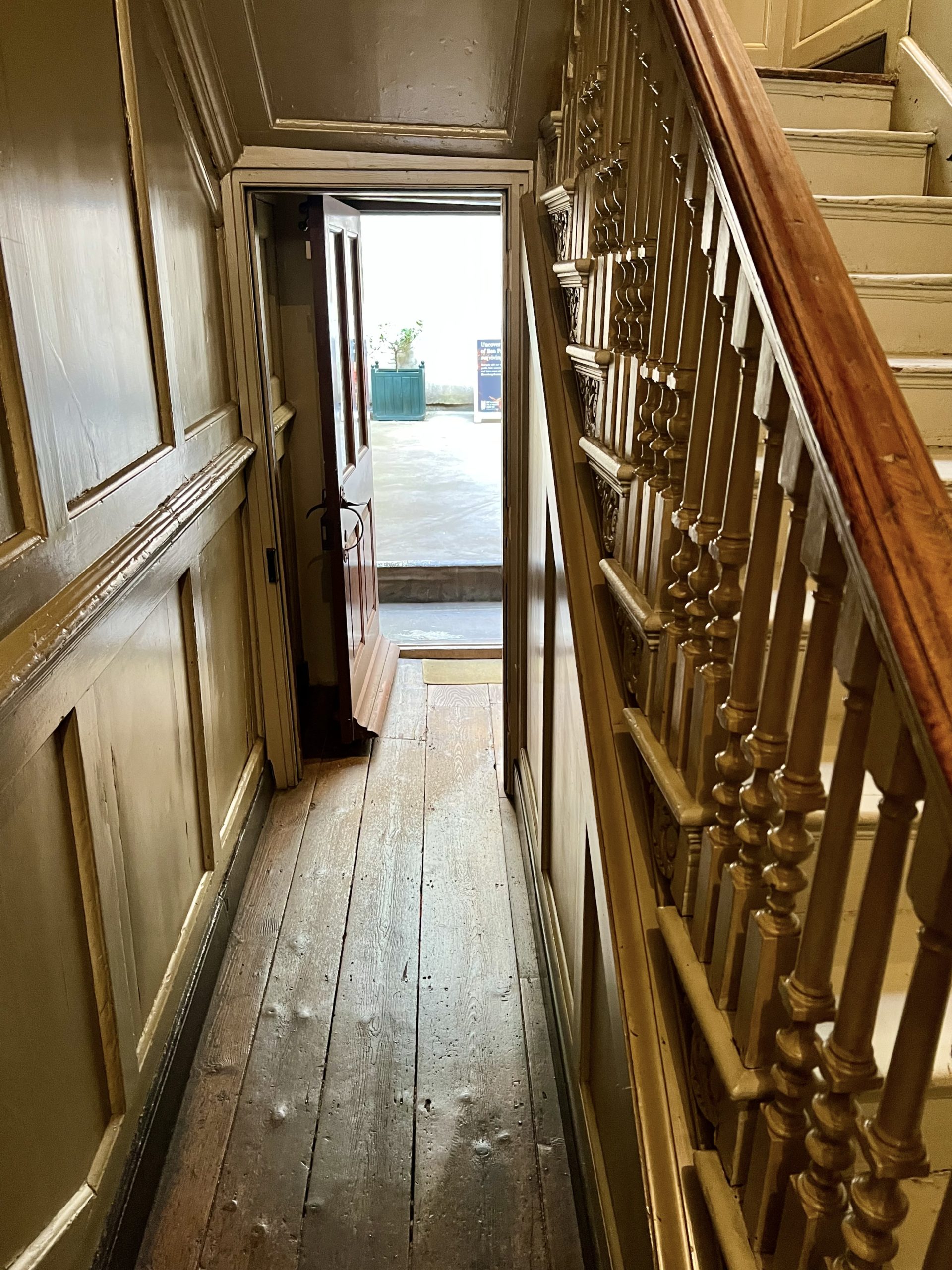
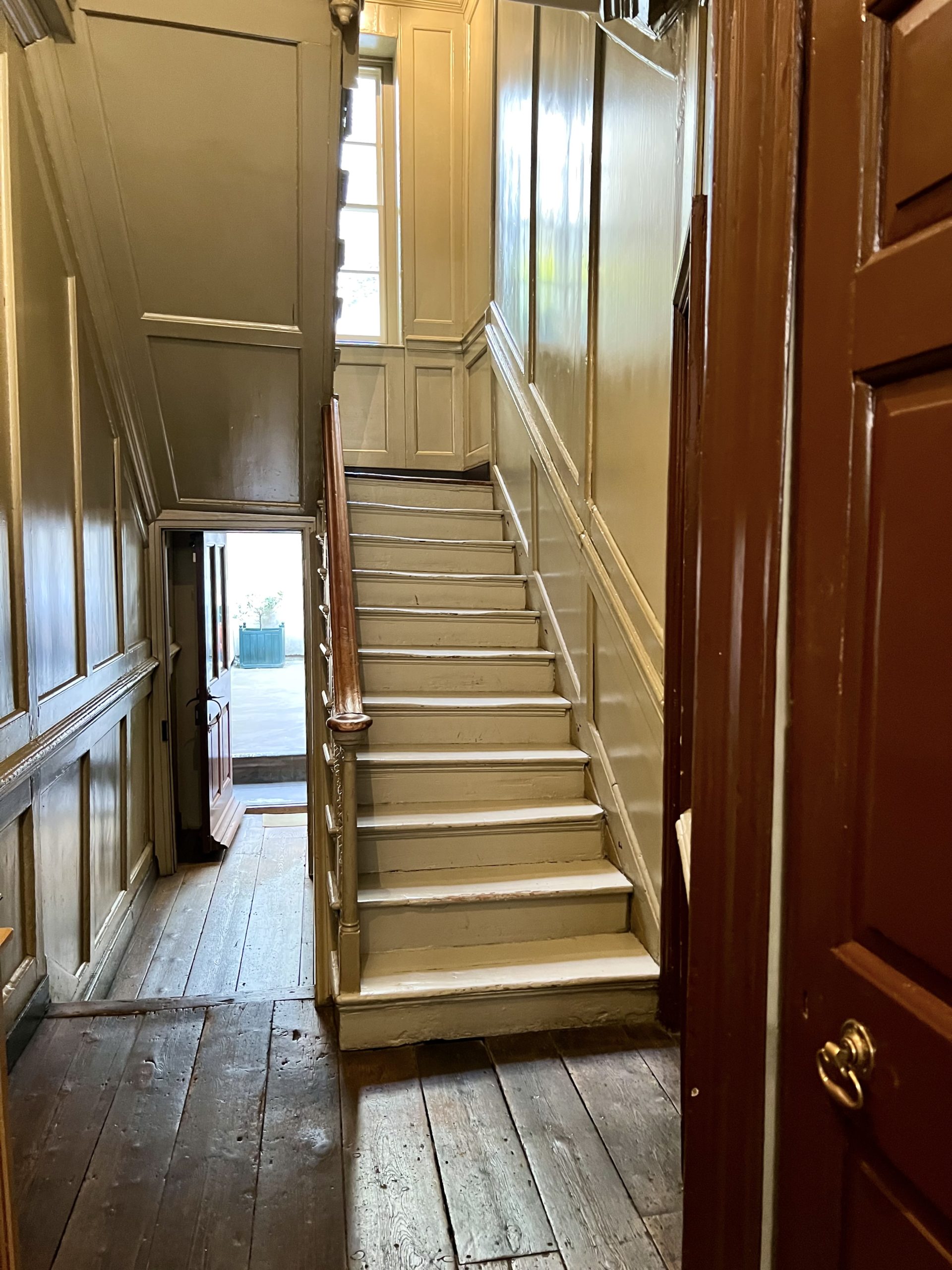
What To See At The Benjamin Franklin House
Dating from 1730, the house museum is a bit of a time capsule, with original period features.
You can see four levels of the house and admire the beautiful and spare Georgian interior.
Using scientific technology, the conservationists were able to determine what the original paint colors were. As a result, most of the house is painted in “Franklin Green.”
1. Ground Floor
You first enter into a visitor space in the lowest level of the house. You’ll get a short overview of the house’s history.
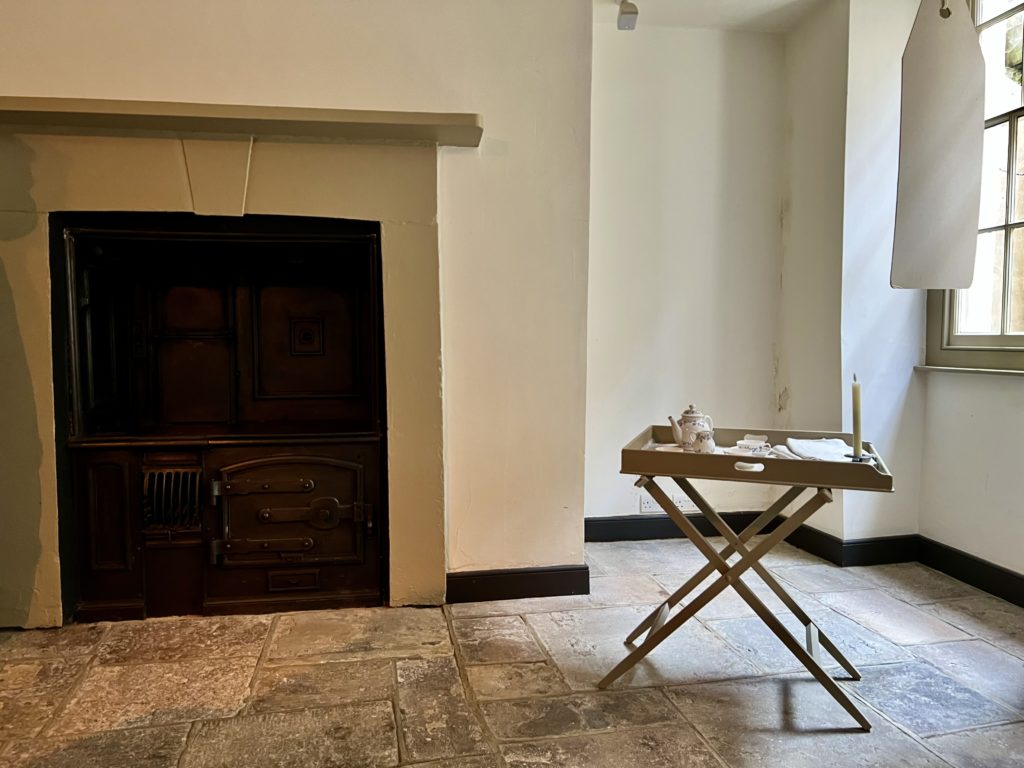
There are some artifacts in the room, including some of the infamous Craven Street bones.
The kitchen was the domain of the maids and Franklin’s two slaves. (Yes, he had slaves, though he later became an abolitionist). It has the original stone floor.
For a time, Franklin experimented with vegetarianism. He considered it more ethical and preferred to spend his money on books instead of meat.
Though he changed his mind about fish when he realized that fish ate one another. Franklin said, “If you eat one another, I don’t see why we mayn’t eat you.”
The English diet of starchy food and beer didn’t do him any favors. He became rather obese and struggled with gout while in London and afterward.
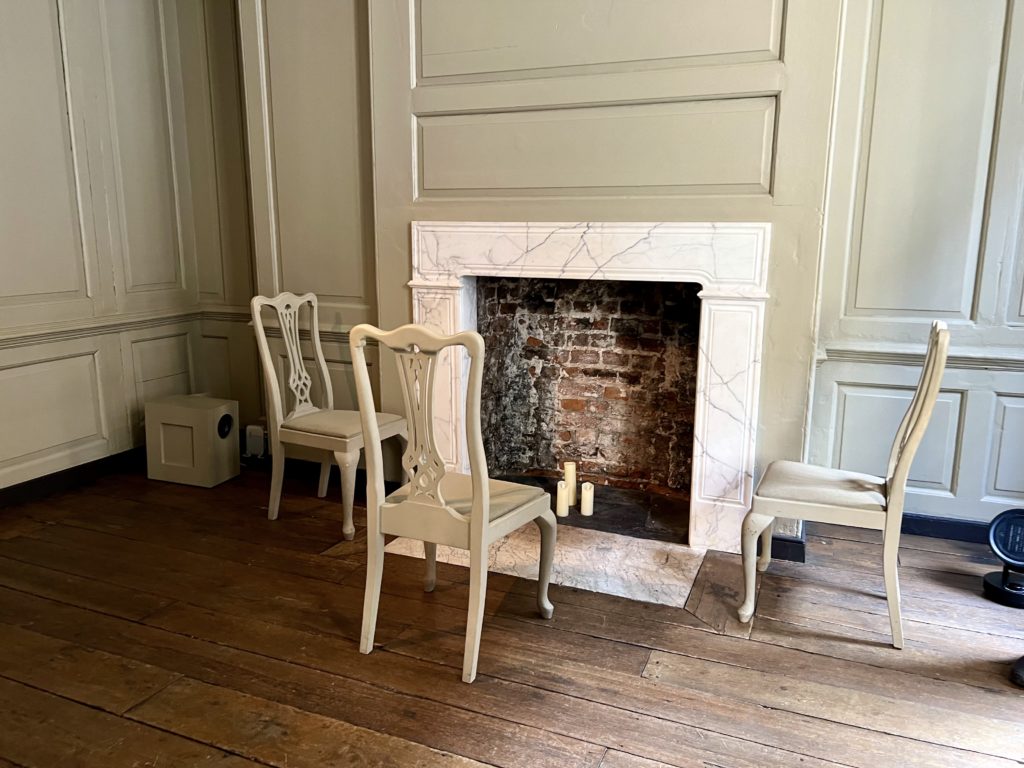
2. 1st Floor
On the first floor, you’ll find the parlor room and cards room.
The parlor featured then innovative double shutters. You could close the bottom section for privacy, while keeping the top section open to allow light into the room.
The parlor was where guests were entertained. Perhaps Franklin’s most famous guest was Lord Chatham, the most famous man in England at the time.
The cards room has an original fireplace. It was a private room for the Stevensons.
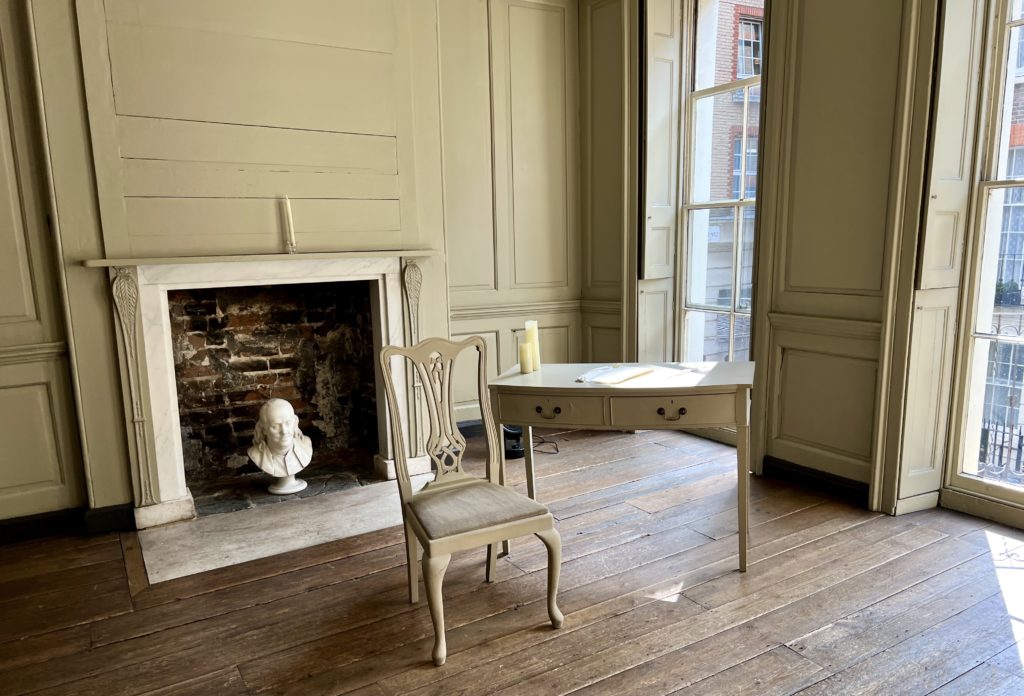
3. 2nd Floor
On the second floor, you can see Franklin’s bedroom and office space. His office has massive Victorian windows with long sheets of glass.
According to my guide, Franklin was a big believer in the healing power of fresh air. He would budget time for “air baths” where he would stand naked in front of the windows to “cure” himself. Who knows what the neighbors thought …
There’s another original fireplace made of King of Prussia marble in the office. And a bust by the French artist and sculptor Jean-Antoine Houdon.
Franklin’s bedroom was a similar space to the cards room below it. Originally, his bed was in the corner and there was a large desk by the window.
This is where Franklin conducted some of his experiments and wrote pamphlets. He refined the stove that bears his name and identified lead poisoning as a culprit in printer maladies.
A kite in the corner represents Franklin’s most famous experiment. It led to the invention of the lightning rod and the understanding of positive and negative charges.
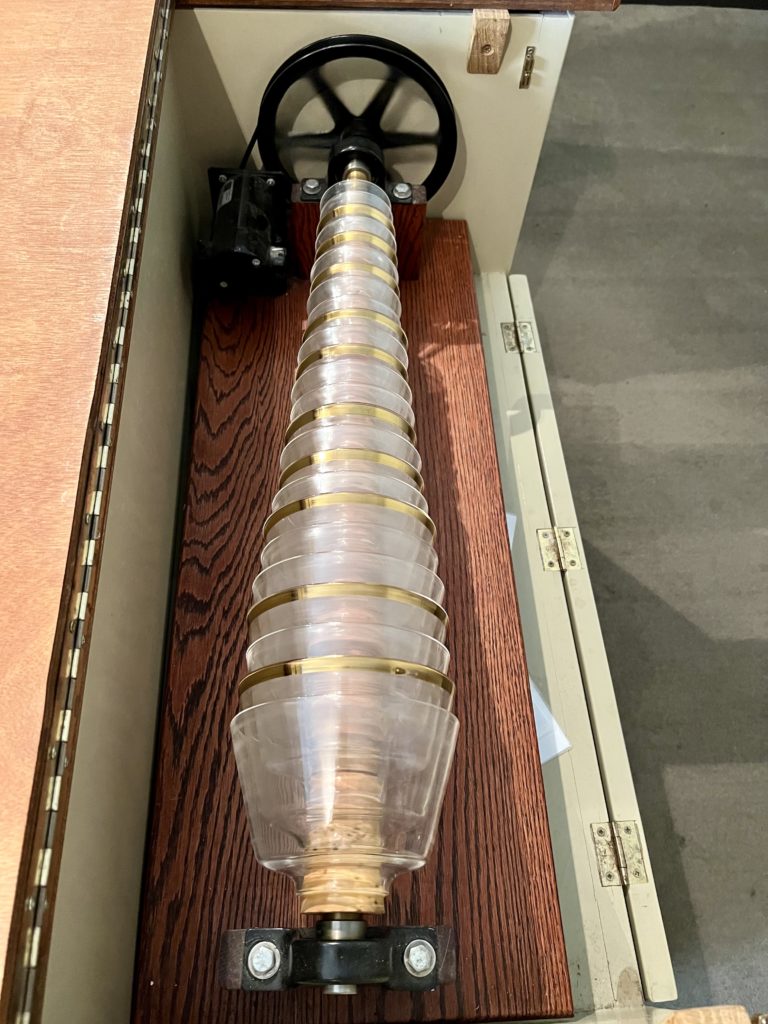
4. 3rd Floor
On the third floor, you can see a famous musical instrument that Franklin invented, the glass harmonica.
It was one of the most celebrated instruments of the 18th century. You’re even allowed to play it.
The glass harmonica was made of 37 glass bowls of varying thicknesses and sizes. They were threaded horizontally on an iron spindle, which was turned by a foot pedal.
By moistening his or her fingers with water, a player could produce up to ten different sounds.
Mozart and Beethoven composed pieces for the glass harmonica. But it later fell out of favor. Recently, John Williams used it as music for Hagrid’s theme in the Harry Potter movies.
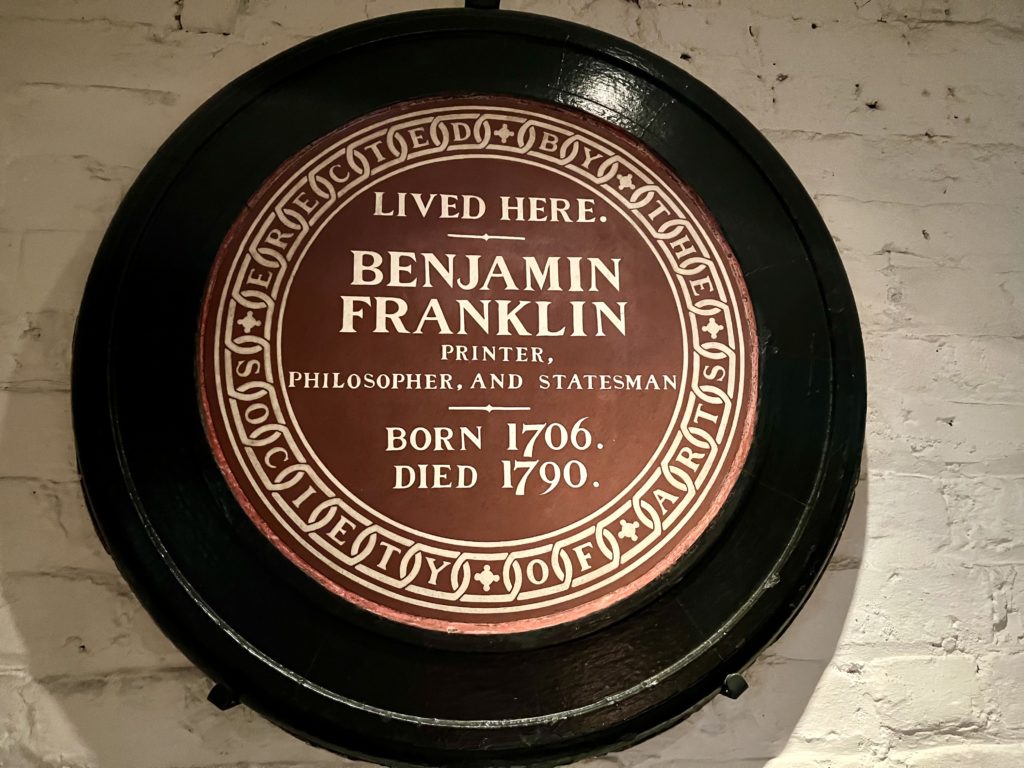
Ticket & Tours For The Benjamin Franklin House
You can only visit the museum on a 45 minute guided tour. Because only small groups are admitted, the tours book up quickly so don’t delay too much in making your reservation.
You can choose the Georgian Architectural Tour (£7.50) or the History Tour (£9.50) with guides in period costume. I’d recommend the history tour unless you have a special interest in architecture.
The architecture tour reveals the Georgian features of the building and gives you an overview of the comprehensive conservation efforts that saved the house from dereliction.
On the historical tour, you’re guided around by a costumed Polly Stevenson-Hewson.
It’s a blend of live performance and audiovisual elements to try to make the history of Franklin’s time in London come to life. You’ll see how the house might have looked in Franklin’s day.
You can also click here to take a virtual tour of the Benjamin Franklin House.
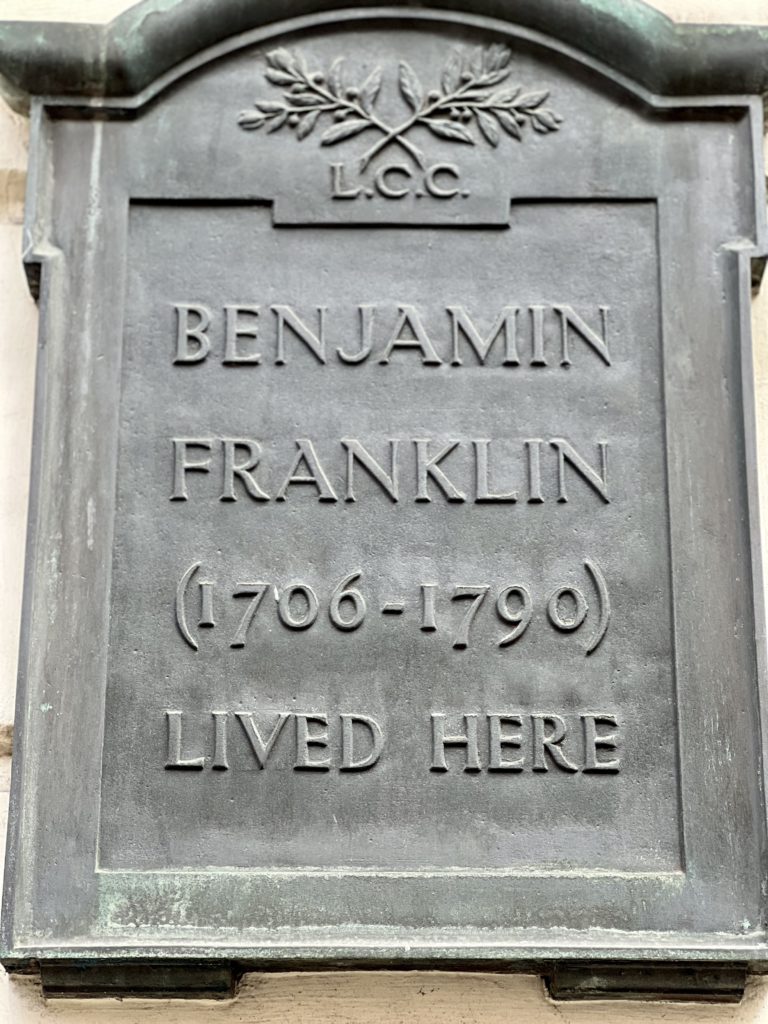
Is The Benjamin Franklin House Worth Visiting?
The house is a small museum that will mainly appeal to history buffs.
You’ll learn a lot about Franklin’s life. He was one of the most interesting characters of the pre and post Revolutionary War eras, so it’s an interesting dose of history.
You’ll also see an authentic 18th century house where the great man lived for many years. The guides are knowledgable and passionate.
The history tour helps buffet the fact there is nothing inside the house. If you like to look at furniture-filled rooms (understandable of course), this may not be the museum for you.
If you have the London Pass, the museum is free to visit. So if you are hesitating, you can make a reservation and pop in quickly with your pass.
The Benjamin Franklin House is near other London attractions as well. You’re close to Trafalgar Square, the National Gallery of Art, the Churchill War Rooms, and Westminster Abbey.
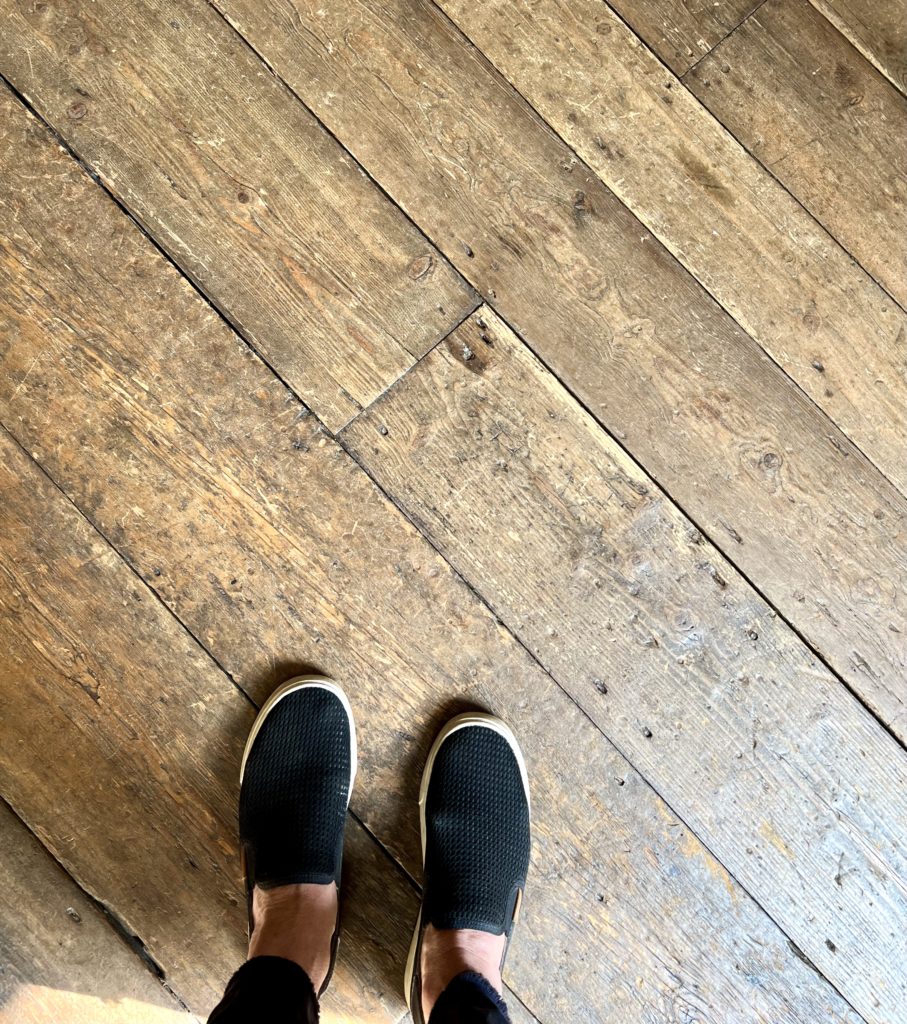
Practical Information & Tips For Visiting
Here are some things to know about visiting the Benjamin Franklin House.
Address: 36 Craven Street, London WC2N 5NF
Opening Hours:
12:00 am to 5:00pm : Friday, Saturday & Sunday
10:30 am to 12:00 pm & 1:00 pm to 12:30pm: Tuesday (Schools Only)
Ticket Price: You can choose the Georgian Architectural Tour (£7.50) or the History Tour (£9.50).
Pro Tips:
I would arrive at least 15 mins before the tour time so you have to time to read the information boards in the basement.
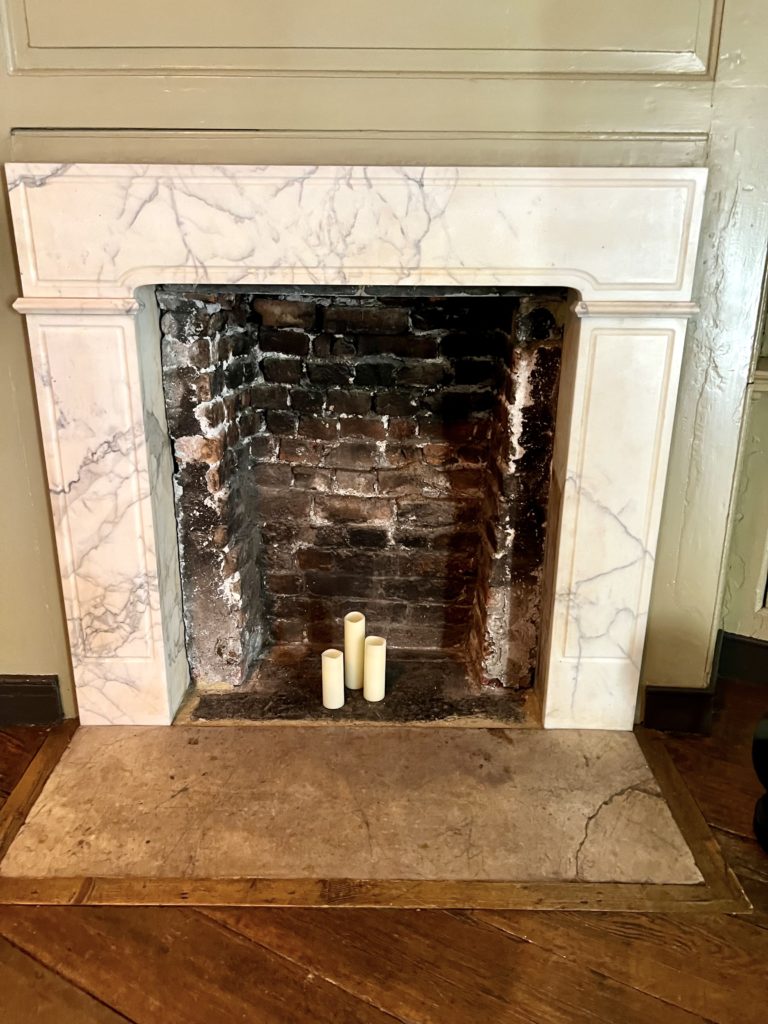
When you get to the museum, you will have to bang on the door knocker to alert the guides that you are there. The museum is locked and you can’t just walk inside.
I hope you’ve enjoyed my guide to the Benjamin Franklin House. You may enjoy these other London travel guides:
- 3 Day Itinerary for London
- 5 Day Itinerary for London
- Best Museums in London
- Harry Potter Places in London
- Guide to the National Gallery of Art
- Guide to St. Paul’s Cathedral
- Guide to the Tate Britain
- Guide to Wesminster Abbey
- London Tourist Traps To Avoid
- Guide to the Tower of London
- Guide to the Churchill War Rooms
If you’d like to visit the Benjamin Franklin House in London, pin it for later.
